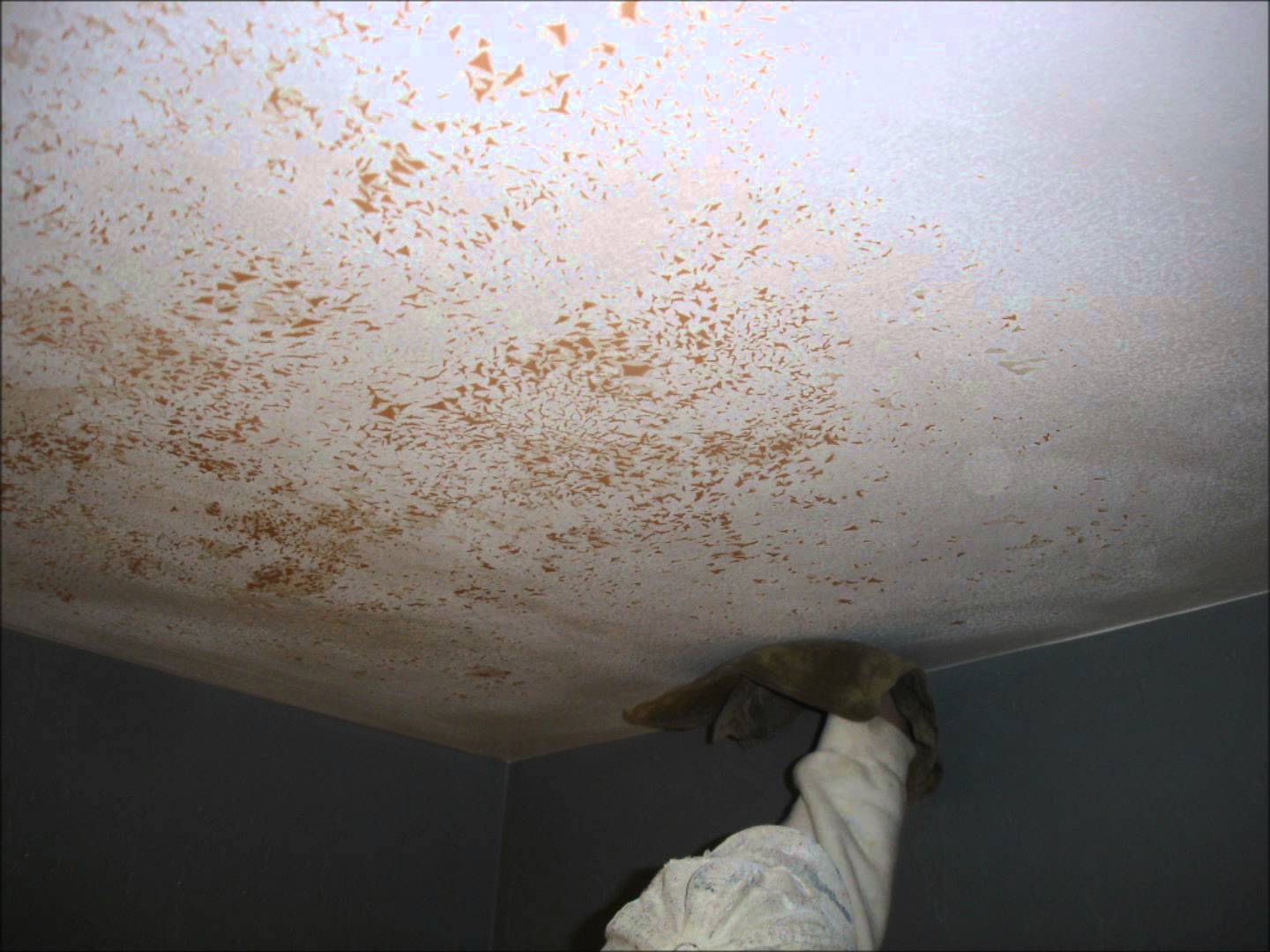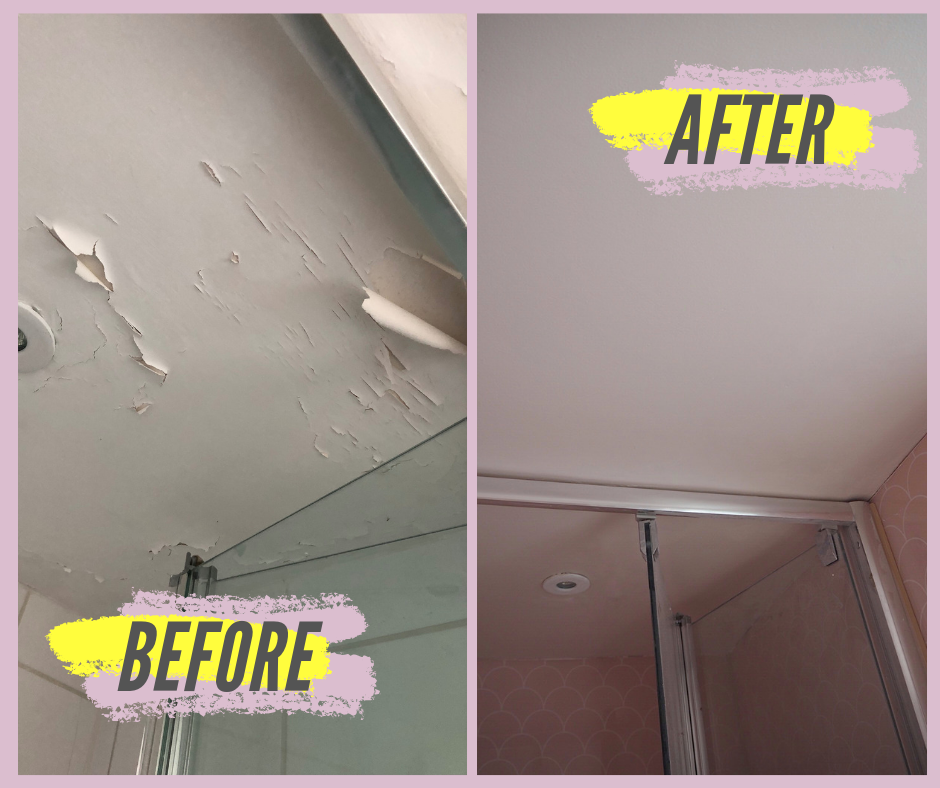Identifying the Problem and Assessing Damage: Ceiling Paint In Bathroom Peeling Off

Before you start any repairs, it’s essential to understand the extent of the damage. Peeling paint in your bathroom can be caused by various factors, and knowing the root cause will help you choose the appropriate repair method.
Assessing the Extent of Peeling Paint
To effectively assess the damage, a checklist can help homeowners identify the problem areas and determine the severity of the peeling paint.
- Identify the affected areas: Carefully examine the bathroom ceiling, noting all areas with peeling paint.
- Check for moisture: Look for signs of moisture, such as water stains or dampness. This indicates potential water damage that needs to be addressed before painting.
- Assess the size of the peeling paint: Determine the size of the peeling areas. Are they small patches or large sections?
- Evaluate the location: Note the location of the peeling paint. Is it concentrated in specific areas, such as near the shower or tub?
- Inspect the underlying surface: Check the condition of the surface beneath the peeling paint. Is it still smooth or are there cracks or holes?
Categorizing the Severity of Peeling Paint
The severity of peeling paint can be categorized based on its size and location.
| Severity | Size | Location | Description |
|---|---|---|---|
| Minor | Small patches | Scattered areas | A few small patches of peeling paint that are easily repairable. |
| Moderate | Medium-sized areas | Concentrated areas | Larger areas of peeling paint that may require more extensive repairs. |
| Severe | Large sections | Extensive areas | Significant peeling paint that may indicate underlying structural problems. |
Determining the Depth of the Problem, Ceiling paint in bathroom peeling off
To determine if the problem is superficial or requires deeper repairs, you need to inspect the underlying surface.
- Superficial Peeling: If the peeling paint is only affecting the top layer and the underlying surface is still intact, the problem is likely superficial. You can address this by scraping off the loose paint and applying a fresh coat.
- Deeper Repairs: If the peeling paint is exposing the underlying surface, or if the surface is damaged, you’ll need to address the underlying issue before repainting. This may involve repairing cracks, patching holes, or addressing water damage.
Tools and Equipment for Inspecting Peeling Paint
To effectively inspect the peeling paint, you’ll need the following tools and equipment:
- Scraper: To remove loose paint and debris.
- Putty knife: To check the condition of the underlying surface.
- Magnifying glass: To get a closer look at the peeling paint and the underlying surface.
- Moisture meter: To detect moisture levels in the affected areas.
- Flashlight: To illuminate dark areas and identify hidden problems.
- Gloves and safety glasses: To protect yourself from dust and debris.
Repairing and Preventing Peeling Paint

Once you have identified the cause of the peeling paint and assessed the damage, you can begin the repair process. This involves removing the loose paint, preparing the surface, and applying a new coat of paint.
Removing Peeling Paint
Removing the peeling paint is the first step in repairing your bathroom ceiling. You can use a variety of tools for this, including a scraper, a putty knife, or a paint remover.
- Use a scraper or putty knife to gently remove the loose paint. Be careful not to damage the underlying surface.
- If the paint is stubborn, you can use a paint remover. Apply the remover according to the manufacturer’s instructions.
- Once the paint is removed, you can use a damp cloth to wipe away any remaining residue.
Preparing the Surface
Once the peeling paint is removed, you need to prepare the surface for repainting. This involves cleaning, sanding, and priming the ceiling.
- Clean the surface with a damp cloth and mild detergent. This will remove any dirt, grease, or grime that could interfere with the new paint.
- Sand the surface with fine-grit sandpaper. This will help to create a smooth surface for the new paint to adhere to.
- Apply a primer to the surface. This will help the new paint to adhere to the ceiling and prevent it from peeling in the future.
Applying New Paint
Once the surface is prepared, you can apply a new coat of paint. It’s important to use a paint that is specifically designed for bathrooms, as it will be more resistant to moisture and mildew.
- Use a paint roller to apply the paint evenly to the ceiling.
- Start in one corner of the ceiling and work your way across, applying thin coats of paint.
- Let the first coat dry completely before applying a second coat.
Preventing Future Peeling Paint
Once you have repainted your bathroom ceiling, you can take steps to prevent the paint from peeling in the future.
- Improve Ventilation: A well-ventilated bathroom will help to reduce moisture buildup, which is a major cause of paint peeling. Ensure your bathroom has adequate ventilation by using an exhaust fan during and after showers.
- Use Moisture-Resistant Paint: Using a paint specifically designed for bathrooms will help to prevent peeling due to moisture. Look for paints labeled as “moisture-resistant” or “bathroom paint”.
Ceiling paint in bathroom peeling off – Peeling ceiling paint in a bathroom can be a sign of moisture issues, which can be exacerbated by a lack of natural light. If your bathroom is windowless, consider using a light and airy paint color to create a sense of spaciousness and brightness.
Check out these tips for choosing the paint color for a windowless bathroom that can make all the difference. Once you’ve addressed the moisture problem, you can repaint the ceiling with a fresh coat of paint, ensuring proper ventilation to prevent future peeling.
Peeling paint on a bathroom ceiling is a common problem, often caused by moisture buildup from steamy showers. This moisture can lead to the paint losing its adhesion, causing it to flake and peel. In some cases, the peeling paint can be a symptom of a deeper issue, such as bathroom ceiling paint cracking , which could indicate structural problems.
If you notice peeling paint, it’s important to address the underlying cause to prevent further damage and ensure a long-lasting, beautiful finish.